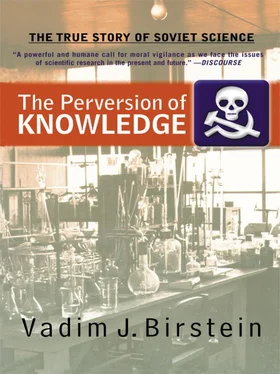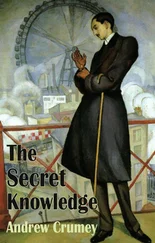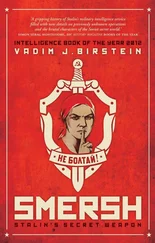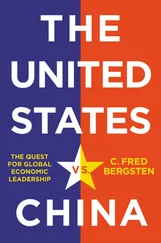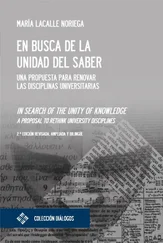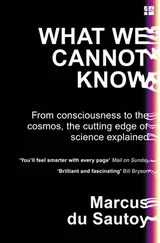In 1937, the Lysenkoists published a series of articles against Koltsov. 17On May 20, 1937, in his speech at the Annual Session of the Academy, the Secretary Academician Nikolai Gorbunov connected Koltsov with Nikolai Vavilov and called them Fascists: “The Institute of Genetics [headed by Vavilov] of the Academy of Sciences not only did not criticize Professor Koltsov’s fascistic nonsense, but even did not dissociate itself from his ‘theories’ which support the racial theories of the fascists.” 18
On June 29, 1937, a month after this session, Gorbunov, who was Lenin’s former secretary, was arrested by the NKVD and shot on September 7, 1938, immediately following the “trial.” 19The same year the Medical Genetics Institute was disbanded. This institute had been modeled after the laboratory of medical genetics at Koltsov’s institute. A medical doctor, Solomon Levit (1884–1934) joined the Bolshevik (Communist) Party in 1919. 20From 1926 until 1930, he was a high-ranking bureaucrat at the Communist Academy. This academy (at first the Socialist Academy of the Social Sciences) was founded in 1919 as a competitor to the Academy of Sciences but was incorporated in 1936 into the Academy of Sciences. 21From 1928, Levit worked at the Medical Genetics Institute and in 1930 was appointed its director. During 1931, Levit and another Party member, the geneticist Isaac Agol, worked in the United States at the laboratory of the prominent geneticist (and later a Nobel laureate) Hermann J. Muller. In 1938, both Levit and Agol were arrested by the NKVD and shot. 22
In January 1939, Koltsov and another outstanding biologist, Lev Berg, 23were nominated by the biology branch of the Academy of Sciences to become full members of the academy (both were corresponding members). But the day before the election, the official Communist newspaper, Pravda , published an article against both scientists entitled “Pseudo-Scientists Should Not Be Members of the Academy of Sciences.” 24In this article, Koltsov was described as “a counterrevolutionary” and “a fascist,” and Berg was called “an idealist” who sympathized with Hitlerism. The article was signed by Academicians Aleksei Bach and Boris Keller; Professor Khachatur Koshtoyanst; and Candidates of Biological Sciences A. Shcherbakov, R. Dozortseva, Ye. Polikarpova, N. Nuzhdin, S. Kraevoi, and K. Kosikov. I have already described the role of Academician Bach in the Sovietization of the academy. Boris Keller (1874–1945), a member of the Agricultural Academy (VASKhNIL), was one of only six VASKhNIL Academicians (there were forty-seven full members of VASKhNIL in the 1930s) who had strongly supported Lysenko since 1935. Keller’s devotion to Lysenko was rewarded in 1938, when the Academy Presidium issued an order to establish a Laboratory of Evolutionary Ecology for him within the Institute of Genetics. 25
Two of the signers, Dozortseva and her husband, Nuzhdin, had begun their careers as geneticists and coworkers of Vavilov. Obviously, there were plenty of careerists in the scientific community who were ready to follow any order of the Bolshevik (Communist) Party. Dozortseva was awarded almost instantly for her deed. In March 1939, she was appointed scientific secretary of the academy’s biological branch. Her husband, Nikolai Nuzhdin (1904–1972), was elected a corresponding member of the academy in 1953, after he had published many articles supporting Lysenko. Still, he never became a full member. In 1964, when Nuzhdin’s name was suggested for nomination at the Academy General Assembly, at first the molecular biologist Academician Vladimir Engelhardt spoke against his candidacy. 26But the words of Academician Andrei Sakharov, who informed the assembly about the destructive role Nuzhdin had played as one of Lysenko’s closest cronies, were the most important:
Together with Academician Lysenko, he [Nuzhdin] is responsible for the shameful backwardness of Soviet biology and of genetics in particular, for the dissemination of pseudoscientific views, for adventurism, for the degradation of learning, and for the defamation, firing, arrest, even death, of many genuine scientists. I urge you to vote against Nuzhdin. 27
In his short speech, another prominent physicist, Academician Igor Tamm, supported Sakharov. 28In vain, Lysenko tried to defend his protégé. The third physicist, Academician Yakov Zeldovich, openly announced that he would vote against Nuzhdin. Nuzhdin’s career was over. After Sakharov’s statement, he was not elected. This was quite an unusual event at the academy: According to Soviet practice, all candidates were approved by the Science Department of the Communist Party Central Committee before elections. 29This practice started in 1927, when a Special Commission of the Sovnarkom (Council of People’s Commissars) was formed to control Academy of Sciences activity and election of academicians. 30All materials of this commission were “top secret.” After the academy meeting, Sakharov wrote two letters about Lysenkoism and Lysenko’s attempt to nominate Nuzhdin to Izvestiya and to Nikita Khrushchev personally. 31As a punishment for voting against Nuzhdin, Nikita Khrushchev wanted to disband the academy, but he was dismissed from his post as first secretary of the Party during a bloodless coup and was replaced by Leonid Brezhnev before he could act against the academy. 32
Lysenko, who was seated at the meeting near Sakharov, was furious: “People like Sakharov should be locked up and put on trial!” 33As we now know, Lysenko’s wish became a reality in 1980, when Sakharov was exiled to Gorky (Nizhnii Novgorod) without a trial, under heavy KGB guard. It would have been a triumphant victory for Lysenko, had he not died four years before.
But all these events happened much later than the tragic days of 1939. On January 23, 1939, Trofim Lysenko and his crony Nikolai Tsitsin were elected to the Academy of Sciences instead of Koltsov and Berg. This was the second time Koltsov had not been elected because of Party disapproval. Tsitsin’s career started in the early 1930s. 34In 1935, with Stalin’s personal support, Tsitsin became director of the West Siberian Experimental Station in Omsk, and the station was promoted to the Siberian Institute of Grain Culture. In 1938, he was appointed director of the Academy Botanical Garden in Moscow. From the late 1940s to early 1950s, during the time of Lysenko’s greatest power, Tsitsin was chairman of the “Court of Honor” of the Academy of Sciences. These “courts,” which existed within the ministries and the central state committees, were created in the late 1940s to try scientists who refused to follow Lysenko’s pseudoscience or for officials who did not follow the instructions of Communist Party leaders. 35In November 1947, the “Court of Honor” of the Academy of Sciences condemned anti-Lysenkoist geneticist Anton Zhebrak (1901–1965). The “court trial” was supervised by the Politburo main ideologist, Mikhail Suslov. As a result, Zhebrak was dismissed from his post as president of the Belorussian Academy of Sciences. The MGB tried to arrest him at his apartment in Minsk, but Zhebrak’s friends hid him and the MGB did not find him. 36But it seems Lysenko did not inspire loyalty. In February 1948, Tsitsin wrote a letter to Stalin criticizing Lysenko, 37and in the late 1950s, he became Lysenko’s rival as the leader of Michurin’s biology.
In 1939, after the elections, the president of the Academy of Sciences, botanist Vladimir Komarov, welcomed Lysenko and Tsitsin as “the most deserving scientists” joining the academy. Stalin himself, as well as Chief Prosecutor Andrei Vyshinsky, were also “elected” as honored full members. The chairman of the Council of Ministers and Politburo member Vyacheslav Molotov was “elected” an academy full member later, in 1946. Stalin himself sent him a telegram (Molotov was in New York): “19.9.46. The academicians ask you not to object to your election to honorary membership in the Academy of Sciences. Please do agree. Druzhkov [i.e., With friendship].” 38Understanding that the situation with the elections was “a death sentence” for his institute, Koltsov wrote an appeal to Stalin, 39to no avail. The article in Pravda against Koltsov and Berg meant that the highest Soviet and Party authorities, including Stalin himself, approved Lysenko’s and Tsitsin’s election.
Читать дальше
